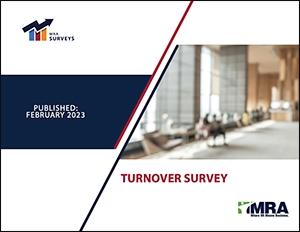Interested in viewing this valuable resource? Log in if you are an MRA member and click the download button to the right. If you are not a member, click below to fill out a short form and it will be emailed to you.
The “Great Resignation” that started in 2021 created a job market in favor of employees and those seeking new opportunities. This continued during 2022 as business leaders faced another year of unpredictability that challenged employers to become creative with their recruitment and retention strategies.
While it appears that the volatility of turnover that grew over the last couple of years has started to stabilize, organizations should continue to see challenges with competitive talent, an exhausted workforce, and pressure to control costs due to the current economic environment.
The word "turnover" can sometimes have a negative connotation, but not all turnover is necessarily bad. It is important to remember that employee turnover is a natural part of an organization's operations, whether voluntary or involuntary. All turnover is worthy of investigation and analysis.
Retention strategies can affect turnover and help an organization understand its employees. Organizations can take proactive measures to prevent current employees from looking at alternative employment by focusing on developing employees' careers, creating satisfying job positions, and maintaining a solid company culture.
Additionally, organizations can use exit interviews when an employee leaves and leverage the feedback obtained as an opportunity for growth and improvement. It is essential to understand what has happened to create this environment, and use it to evaluate employees, ensure compensation and benefits plans align with the organization's culture, and improve upon communication with its employees.



